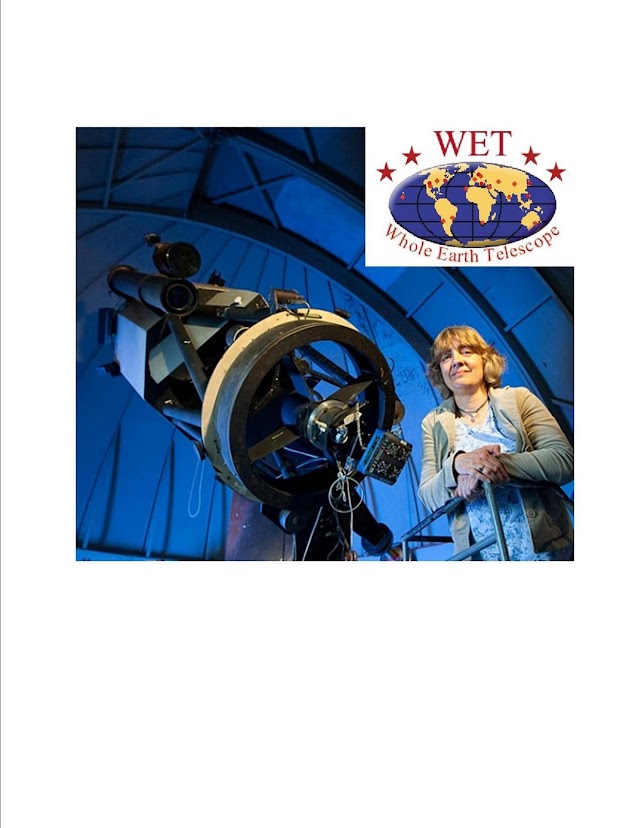Judi Provencal
- Judi Provencal
- B.A., Smith College, 1987 M.A., Astronomy, The University of Texas, 1990 Ph.D., Astronomy, The University of Texas, 1994 2005-present: Director, Delaware Asteroseismic Research Center 2005-present: Director, Whole Earth Telescope 2000-present: Resident Astronomer, Mt. Cuba Observatory and the University of Delaware
Tuesday, December 6, 2011
Sunday, December 4, 2011
Saturday, December 3, 2011
Target Stars Summary
Here's a quick summary of our target stars: 1) HS0507+0434B has proven to be very much like EC14012-1446 and GD358. We have identified multiplets associated with several of the modes, plus we have seen power grow as we have been observing:) Take a look at the figure in the blog. You can see how HS0507 has evolved during the run. 2) HL Tau 76 is always interesting. Here we are seeing a wide range of pulsation frequencies - from 900 to 2500 microHz, some of which are multiplets. Some of these "modes" appear to comprise a series that is equally spaced in frequency, which is very interesting. Many of these frequencies also appear in Dolez 2005. Of course, we also find numerous combination frequencies. Take a look at the web page under "Interesting Plots" to see the latest. 3)G132-12 - this beginning of night target was chosen because of its temperature (reported as 12,800 K) and the fact that it only has one mode of pulsation (very low amplitude). The idea is to gather enough cycles (period is about 212 s) to create a pulse shape which we can then use for convective light curve fitting. Many of you might remember the figure from the EC14012 paper that shows our latest empirical relation. We definitely need more hot stars, as G117-B15A is currently our only example. With the addition of WHT, Hawaii, and KPNO data, G132-12 has proven to be interesting. Its pulsation mode is a multiplet with a splitting of around 4.1 microHz. It may be an l=2 mode, but that is unclear. Of course, more data is needed:) 4)EC04207 - We have a beautiful FT of this star, thanks to contributions from Mt. John, SAAO, Prompt, and SOAR. This is a large amplitude DB pulsator dominated by a single mode that is surprisingly stable. We are working towards an eventual pdot measurement. 5) EC05221 - very little is known about this fairly new DBV. We now know that it is the DB example of a type of white dwarf pulsator we like to call the "soft and squishy" stars. As we add more data to this star's light curve, the amplitudes in the FT continue to decrease. This is a sign of instability/amplitude modulation. This star is very similar to R808 and G38-29.
Friday, December 2, 2011
Subscribe to:
Posts (Atom)




